












| Red Squirrel (Sciurus vulgaris (Linnaeus, 1758)) |













|
|
Scientific name: Sciurus vulgaris (Linnaeus, 1758) Common name: Red Squirrel Other names: Eurasian Red Squirrel French name: Écureuil roux, Écureuil d'Eurasie Family: Sciuridae Size: Weight : between 200 and 400g. Size : between 30 and 40 cm including one half for the tail. Biotope: The Red Squirrel is an arboreal squirrel. It is found in forests, woodlands and parks. Food: The Red Squirrel collects its food in trees: hazelnuts, walnuts, seeds, berries, buds, insects and sometimes eggs and chicks. As food cannot be stored inside the nests, the Red Squirrel buries caches in the ground. It also store food in nooks or holes in trees. Longevity : 6 to 7 years. Geographic area: All Europe between the Mediterranean sea and the Polar Circle. Central Asia east to Japan. Almost disappeared from Britain because of the competition with the Eastern Grey Squirrel which was introduced from America. This competition with the Eastern Grey Squirrel has also started in northern Italy. |
The Red Squirrel is a small rodent which is active in the daytime. The coat of the Red Squirrel varies in colour, with seasons and locations, from red to dark brown. The long hairy tail helps the squirrel to climb and jump from tree to tree. The ears end with tufts of hair which grow in late summer and are prominent in winter. The underside is white in colour. Both sexes are similar. Red Squirrels are solitary animals except during the mating period. They make large round nests (diameter of about 50cm), where they shelter. The nests are covered with a roof. The opening is on the underside. Red Squirrels do not hibernate but reduce their activities during winter. Females chase males after mating and will take care of the young alone. There are 2 to 5 young per litter and sometimes two litters per year. The main predators of Red Squirrels are the Pine Marten, the Wild Cat and the Goshawk. |
| [To know more about the Red Squirrel] [Next picture] [Top] |
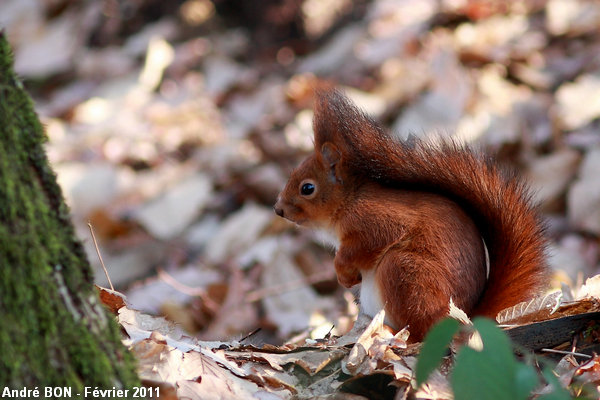
|
The tufts of hairs on top of the ears reach their maximum length in winter. They are used as a perfect support for the tail when it is raised upwards. |
| [To know more about the Red Squirrel] [Next picture] [Previous picture] [Top] |
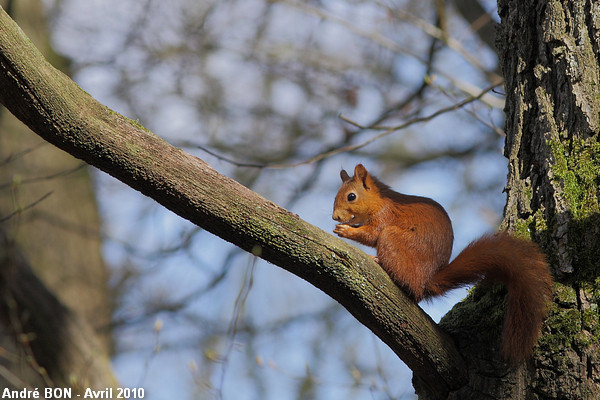
|
My friends, coming with me during the photo sessions, and me have often observed Red Squirrels in this area of the forest. That's why we are now calling this place "the Squirrel corner". |
| [To know more about the Red Squirrel] [Next picture] [Previous picture] [Top] |
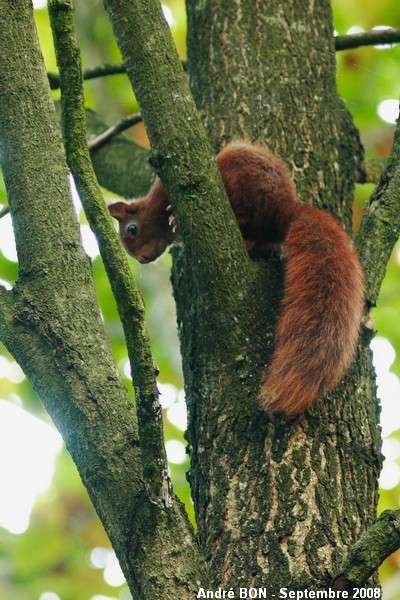
|
It is often difficult to take pictures in woodland areas because of the lack of light. I am always using the same recipe. I am using a tree trunk as a support for the camera or for the lenses to get a better stability. |
| [To know more about the Red Squirrel] [Next picture] [Previous picture] [Top] |
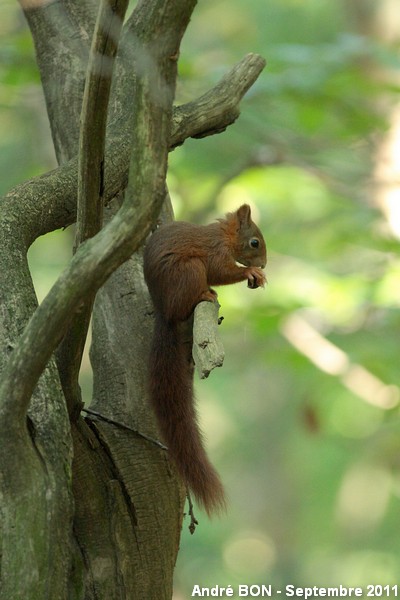
|
I hadn't enough time to make a good composition, the main subject is too centred. Just the time to find a support against a trunk and the Red Squirrel was already far away. |
| [To know more about the Red Squirrel] [Next picture] [Previous picture] [Top] |
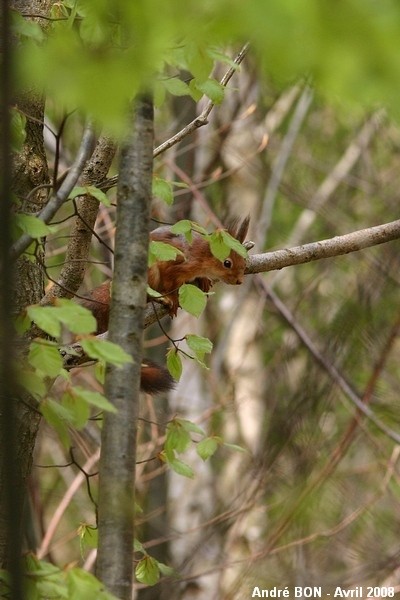
|
Small hide-and-go-seek game in the vegetation. |
| [To know more about the Red Squirrel] [Next picture] [Previous picture] [Top] |
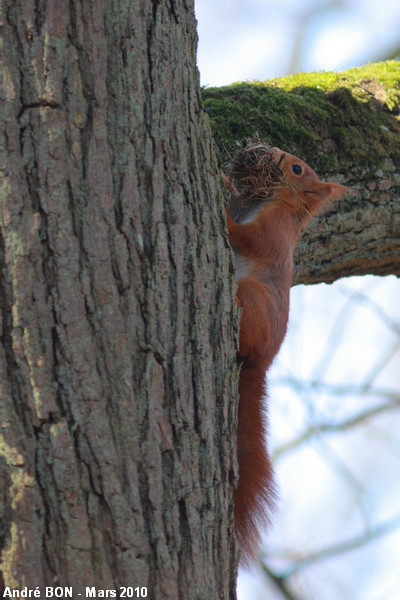
|
There will soon be a well lined cosy nest on top of this oak. |
| [To know more about the Red Squirrel] [Next picture] [Previous picture] [Top] |
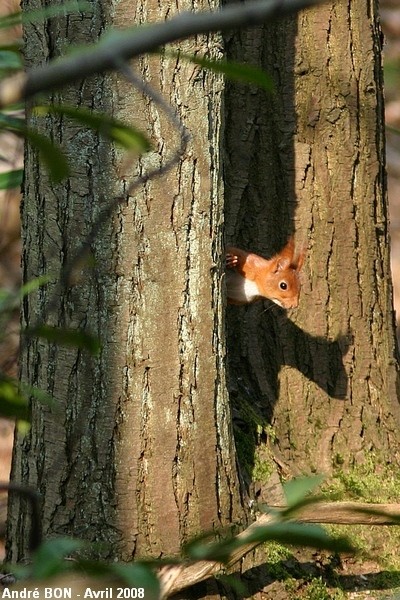
|
Though the light indicator showing the active focus spot is very small, the real active area is larger. As an example, I have pointed the spot here on the squirrel and I think that the focus was made on the trunk. Higher end digital camera may work better with this feature. |
| [To know more about the Red Squirrel] [Next picture] [Previous picture] [Top] |
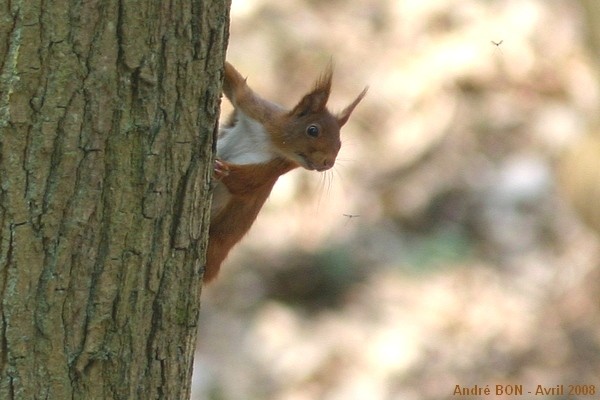
|
The Red Squirrel is rather shy and difficult to approach. I do not try either to attract it with any kind of food. |
| [To know more about the Red Squirrel] [Next picture] [Previous picture] [Top] |
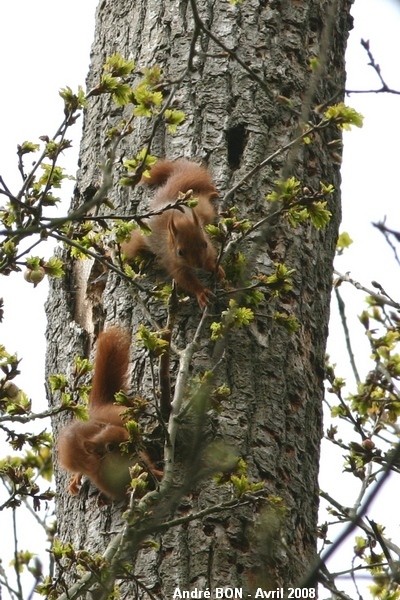
|
I have observed these two juveniles near the top of a tree. They have been out of view during a couple of seconds while I walked near the base of the tree. I haven't seen them any more. I have not insisted on waiting because you mustn't disturb animals for some poor pictures. |
| [To know more about the Red Squirrel] [Next picture] [Previous picture] [Top] |
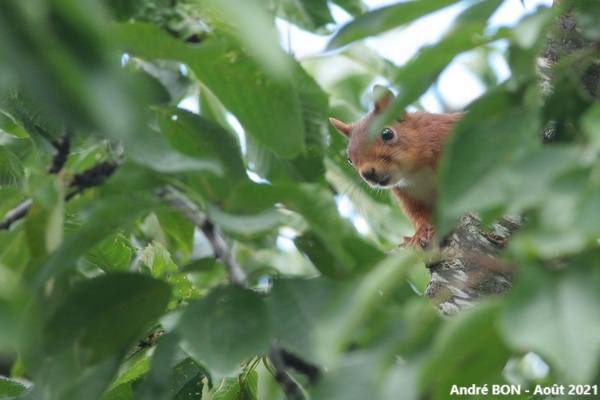
|
I have a hazelnut tree in a corner of my garden, but in 2021, visitors consumed the entire crop. I consoled myself by trying to take a few photos through the foliage. |
| [To know more about the Red Squirrel] [Next picture] [Previous picture] [Top] |
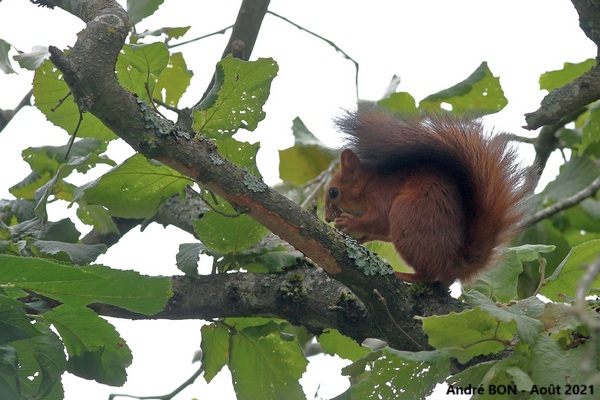
|
It's not easy to spot Red Squirrels among the leaves. Their presence is often betrayed by noise and small falling debris. You then need to find a viewing angle that allows you to take a photo. |
| [To know more about the Red Squirrel] [Next picture] [Previous picture] [Top] |

|
The Hazelnut Tree is on the other side of the house, but thanks to this nice little Red Squirrel for coming to eat its hazelnut in front of the kitchen window. |
| [To know more about the Red Squirrel] [Previous picture] [Top] |

|
Side view. |